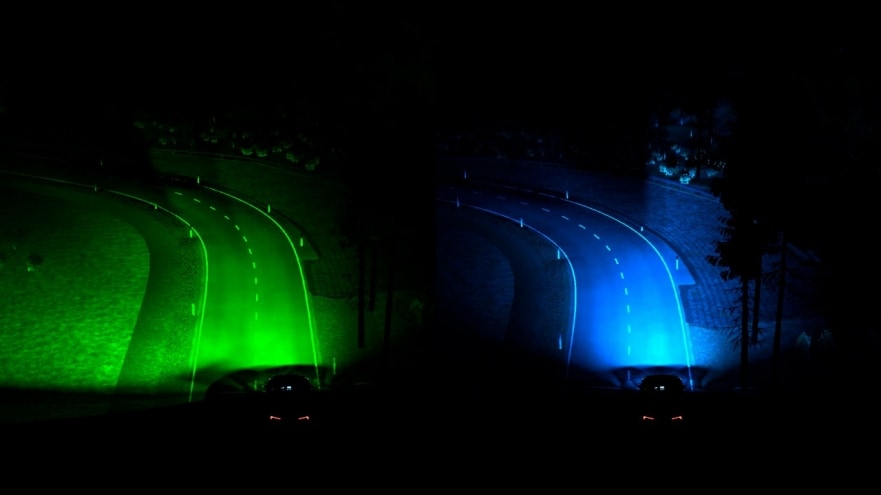DUNTON, Essex 22 April, 2021 -- Driving at night, especially on winding unfamiliar roads, can be stressful, with many people choosing to avoid the experience altogether. 1 However, Ford is looking into new ways of making driving in the dark easier and more comfortable.
The company first pioneered using road signs and lane markings as cues to adjust headlight beams to better illuminate the road ahead, especially around junctions.
Now, engineers from Ford Research and Advanced Engineering Europe are testing technology that uses real-time location data to effectively show the car the way to go. The predictive smart headlight system directs beams into upcoming corners even before drivers may have seen them, illuminating hazards and other road users more quickly and effectively.
How it works
The prototype advanced lighting system uses GPS location data, advanced technologies and highly accurate street geometry information to accurately identify turns in the road ahead.
An algorithm calculates the trajectory and speed of the vehicle to proactively adjust the direction of its headlights, providing optimal light coverage of bends, junctions – and even hazards lurking around the corner.
If the vehicle encounters a stretch of road where location data is not available, the system will work alongside camera- and steering‑based dynamic headlight bending technologies to continue to intelligently light the road until the location data improves.
Researchers have made extensive use of “digital twin” simulation that recreates the physical world in a virtual environment. The simulator accurately calculates how light falls and reflects in the real world, enabling researchers to better visualise and optimise the technology for drivers.
Michael Koherr, Ford European lighting research engineer, said: “The predictive lighting technology we are developing now means that one day driving in the dark could be as simple as just following your headlights. This new map- and location‑based system is the next step on our quest to make driving at night no more difficult or stressful as during the day.”
Footnotes
1. https://www.thisismoney.co.uk/money/cars/article-8967479/Half-drivers-SCARED-drive-dark.html
2. Prototype headlight system not currently available for specification

